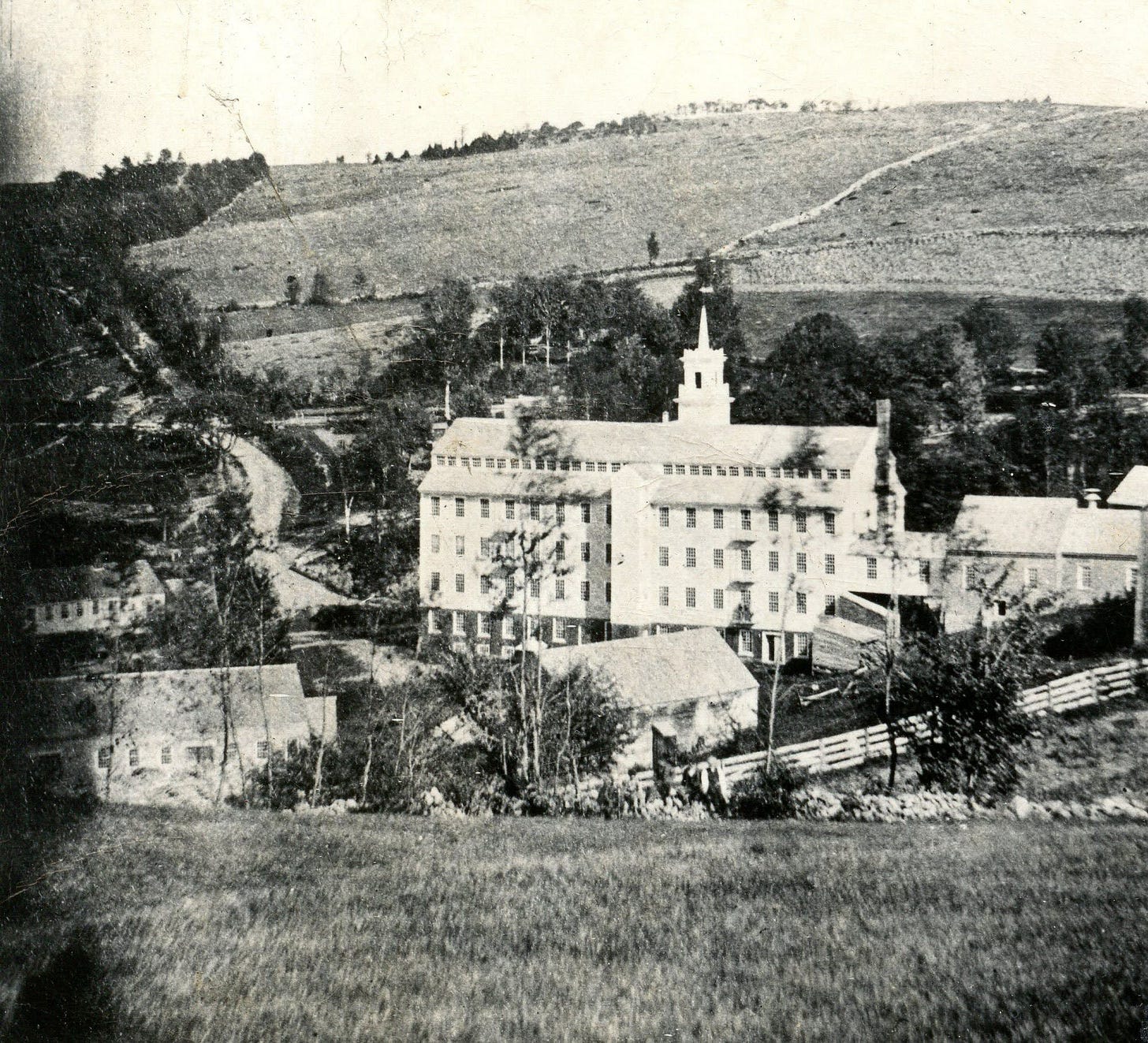News Items - January 26, 1900
Mr. Eaton - Disc Jockey at Engine Hall in Bank Village, Fire anniversary
January 26, 1900
Mr. Eaton of Greenville gave an entertainment with his phonograph at Engine hall in Bank Village, Friday evening.-Mrs. Edwin Frye spent last week out of town in caring for an invalid sister. Monday was the 28th anniversary of the great fire at High Bridge, which destroyed, first, the mill in which it originated, and next, crossing the river took the store belonging to James O. Reed, then following up the turnpike burned the Hamilton house with other dwelling houses owned by S. Brown, George Weston, John M. White and Abel F. Adams, and a boarding house owned by the Columbian Mfg. company on the opposite side of the street. Feb. 26, 1872, fell on Monday, and like this anniversary was memorable for intense cold and high winds. As now the roads were very icy and there was not much snow on the ground. The winter is remembered as similar to this in temperature, amount of snowfall, etc. Much genuine sympathy was expressed for Mr. Weston, who (after seeing the home in which he expected to spend the remainder of his days swallowed up in the flames), sustained a bad fracture of his wrist, which disabled him for a long time.
Highbridge Mill
Captioned as burned August 1838, a date which doesn’t correlate with newspaper clipping. Anyone have better information?
Thayer’s One Hundred Formulas
A reader sent some photos of medicine produced using the formulas published by S.A. Thayer in 1883. Photos of the handbook were also included but the text is challenging to transcribe. This is one example of a formulation, one that I would not recommend using.
Hair Restorative
Finely powdered acetate of lead, 120 grs.; lac sulphur, 160 grs.; rose water, I pint.; glycerine, I OZ. Mix the glycerine with the water, and add the acetate of lead and lac sulphur. Restores gray hair to its original color, cleanses the scalp, and prevents baldness. To be well shaken before using. The lead and sulphur do not all dissolve, but fall to the bottom as a precipitate. Applied occasionally will restore the hair to its original color. Put up in pints, and retails at $1.00 per bottle.
James Roger diary entry
September 21st 1908 (Monday)
Cool morning. David drove Hamish to the Depot for first train and then cut weeds and took some front wheels to get irons on them at Chandlers and choring around. I filled boiler in brooder house. Cut some weeds and mowed some lots. Gut the Wilson lot, also Bolton lot.22nd (Tuesday)
Hidden History: New Hampshire’s Past of Abolition, Slavery, and Underground Railroad
Presented by Michelle Arnosky Sherburne
Saturday, September 21 at 2:00 p.m.
New Ipswich Library (6 Main Street)
Vermont historian, author, and newspaper publisher, Michelle Arnosky Sherburne will delve into New Hampshire’s fascinating hidden history of abolition, slavery, and Underground Railroad networks, highlighting the work of abolitionists to move freedom seekers northward to safety in Canada.
Despite the fact that Portsmouth served as a slave-trade hub for New England, 19th- century NH historians chose to exclude black heritage and history from their publications. In recent decades researchers like Sherburne have uncovered the rich history and significant contributions of enslaved people and discovered that the Underground Railroad network was active throughout the Granite State. With connections to Massachusetts’ abolitionists, such as William Lloyd Garrison, Nathaniel Peabody Rogers and Stephen Symonds Foster, freedom seekers were certainly prevalent in New Hampshire.
Sherburne will share what she has learned from her extensive research over the past 30 years.
A resident of Newbury, VT, Michelle Arnosky Sherburne has spent four decades in the newspaper business. In 2022, she and her husband took over the stewardship of the Journal Opinion, a weekly publication in Bradford, VT. Sherburne’s longstanding interest in the Civil War inspired her research of Vermont and New Hampshire’s Underground Railroad and the Abolitionist Movement, which has led to TV appearances, consultancies, in-school residencies, and the publication of four books and numerous articles. With a history project always in progress, Sherburne enjoys traveling around Vermont and New Hampshire lecturing and sharing her insights into New England’s rich history.





Being a snake oil merchant is one thing. But being a customer and actually buying it is another.
My father-in-law in NH once raised a few turkeys but gave up after a year or so. He said, just when you get them safe, turkeys invent some new way to hurt themselves. Like humans. Lead acetate according to the Web, has a sweet taste and was used as a sugar substitute in wine and foods back in the day. It was used in dyes as well. I mean, please, who would have first even tasted it???